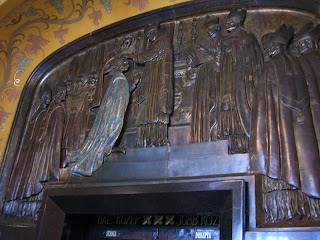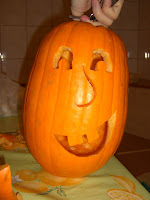Betwixt the Mozart kugel, the waldhonig, the Hirschboxerl and the Bergkäse I found many new favorites. Not to mention that I found most of these foods in one place, the public market. As I look out the bus window on my way to work every morning, which is a different bus and different destination for every day of the week, and as I travel through Europe one fantastic, heart-warming constant is the sight of the public markets, big and small. You win for public markets Europe!
This delightful discovery was made in Salzburg, Austria and is made locally. The charcuterie artisans use venison to make this very simple yet tasty salami.
The Bergkäse is a mountain cheese that is made in the mountains (duh!) in the immediate area of Salzburg. The wheels are massive, but thin which makes them manageable. Please note the cutting board for this cheese: a table with a large enough diameter for a single wheel of Bergkäse and a giant knife hinged to it to cut to the center of the wheel; genius! The cheese is aged 8 or 12 months with the latter being a little more dry tasting, and sharper. Delicious!

The pretzels are top notch and made fresh daily!
Austrian organic forest honey: probably one of the best souvenirs anyone can find!

The Mozartkugel, first called Mozartbonbon when created in 1890, are a Salzburg native chocolate created by Paul Fürst. Fürst's original achievement of the Mozartbonbon was the first perfectly round confection. The original recipe to this Paris fair gold medal winner (1905) remains a secret, but the subsequent name "Mozartkugeln" had no copyright and has since been used to launch a severely successful campaign of chocolate famedom. I had the good fortune of going directly to the industrial source of this wonderful confection: the Mirabell chocolate factory (A Kraft subsidiary) in Grödig which is just outside Mirabell (Salzburg). Though I wasn't able to tour the factory itself, I was able to go into a store in the factory that sells all of the chocolates, candies, cocoa powder, marzipan, stb. stb. at about a 1/3 of the retail price! It must be noted that the handmade counterparts to the industrial "knock-offs" can still be found in Salzburg in 4 stores that bear the name Fürst Confiserie. The original recipe handmade chocolates continue to win medals over the industrial counterparts today.
































